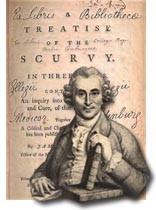James Lind Alliance on:
[Wikipedia]
[Google]
[Amazon]
 The James Lind Alliance is a British non-profit making initiative, established in 2004. It was established to bring
The James Lind Alliance is a British non-profit making initiative, established in 2004. It was established to bring
James Lind Library, biography of James Lind
/ref>
James Lind Alliance
James Lind LibraryJames Lind Institute
{{Authority control British medical research Health economics Health in Hampshire Organisations based in Southampton Research institutes in Hampshire University of Southampton National Institute for Health and Care Research
 The James Lind Alliance is a British non-profit making initiative, established in 2004. It was established to bring
The James Lind Alliance is a British non-profit making initiative, established in 2004. It was established to bring patients
A patient is any recipient of health care services that are performed by healthcare professionals. The patient is most often ill or injured and in need of treatment by a physician, nurse, optometrist, dentist, veterinarian, or other health c ...
, carers and clinicians together, in Priority Setting Partnerships, to identify and prioritise unanswered questions or evidence uncertainties that they agree are the most important. The intention is to ensure that those who fund health research are aware of what matters to patients, carers and clinicians who need to use the research in their everyday lives.
The National Institute for Health and Care Research
The National Institute for Health and Care Research (NIHR) is the British government’s major funder of clinical, public health, social care and translational research. With a budget of over £1.2 billion in 2020–21, its mission is to "impr ...
(NIHR) funds the coordination of the JLA, but Priority Setting Partnerships find their own resources to fund their partnership. In 2016 the James Lind Alliance was granted the Societal Award of the Foundation Federation of Dutch Medical Scientific Societies (Federa) for their initiative to bring patients into partnerships for research priorities.
Background
Research on the effects of treatments often overlooks the shared interests of patients and clinicians. As a result, questions they both consider important are not addressed. The pharmaceutical and medical technology industries and academia play essential roles in developing new treatments, but their priorities are not necessarily the same as those of patients and clinicians. For this reason many areas of potentially valuable research are neglected. Bringing patients and clinicians together to jointly prioritise unanswered questions is thought to be rare.Method of operation
The James Lind Alliance brings together patients and patient representatives, carers and clinicians, as individuals or represented by groups, to form Priority Setting Partnerships, focusing on specific health conditions or settings. For example, the Asthma Priority Setting Partnership was led by Asthma UK and theBritish Thoracic Society
The British Thoracic Society (BTS) was formed in 1982 by the amalgamation of the British Thoracic Association and the Thoracic Society. It is a registered charity and a company limited by guarantee.
Function
The society's main charitable objecti ...
, while the Urinary Incontinence Priority Setting Partnership was led by the Bladder & Bowel Foundation and the Cochrane Incontinence Group, part of the Cochrane Collaboration
Cochrane (previously known as the Cochrane Collaboration) is a British international charitable organisation formed to organise medical research findings to facilitate evidence-based choices about health interventions involving health profess ...
.
Priority Setting Partnerships work together to gather uncertainties from patients, carers and clinicians. The uncertainties are all checked to ensure they cannot be answered by existing knowledge, research or sources of information.
The uncertainties then go through a process of prioritisation, which aims to culminate in a top ten list of priorities for research, shared by patients, carers
A caregiver or carer is a paid or unpaid member of a person's social network who helps them with activities of daily living. Since they have no specific professional training, they are often described as informal caregivers. Caregivers most commo ...
and clinicians. To date, the process has been completed for over 75 health areas including Urinary Incontinence, Anaesthetics and Perioperative Care, Living With and Beyond Cancer, Intensive Care, Prostate Cancer, Cystic Fibrosis, Oral and Dental Health, Mental Health in Children and Young People, and Surgery for Common Shoulder Problems.
James Lind
The Alliance is named after a pioneer ofclinical trials
Clinical trials are prospective biomedical or behavioral research studies on human participants designed to answer specific questions about biomedical or behavioral interventions, including new treatments (such as novel vaccines, drugs, dietar ...
, James Lind
James Lind (4 October 1716 – 13 July 1794) was a Scottish doctor. He was a pioneer of naval hygiene in the Royal Navy. By conducting one of the first ever clinical trials, he developed the theory that citrus fruits cured scurvy.
Lind ...
(1716–1794). Two hundred and fifty years ago, there were many conflicting ideas and unanswered questions about how to treat the deadly disease scurvy
Scurvy is a disease resulting from a lack of vitamin C (ascorbic acid). Early symptoms of deficiency include weakness, feeling tired and sore arms and legs. Without treatment, decreased red blood cells, gum disease, changes to hair, and bleeding ...
. Lind, a Scottish naval surgeon, decided to confront this uncertainty by treating his patients within a clinical trial comparing six of the proposed remedies. His trial showed that oranges and lemons were dramatically better than the other supposed treatments./ref>
References
External links
James Lind Alliance
James Lind Library
{{Authority control British medical research Health economics Health in Hampshire Organisations based in Southampton Research institutes in Hampshire University of Southampton National Institute for Health and Care Research